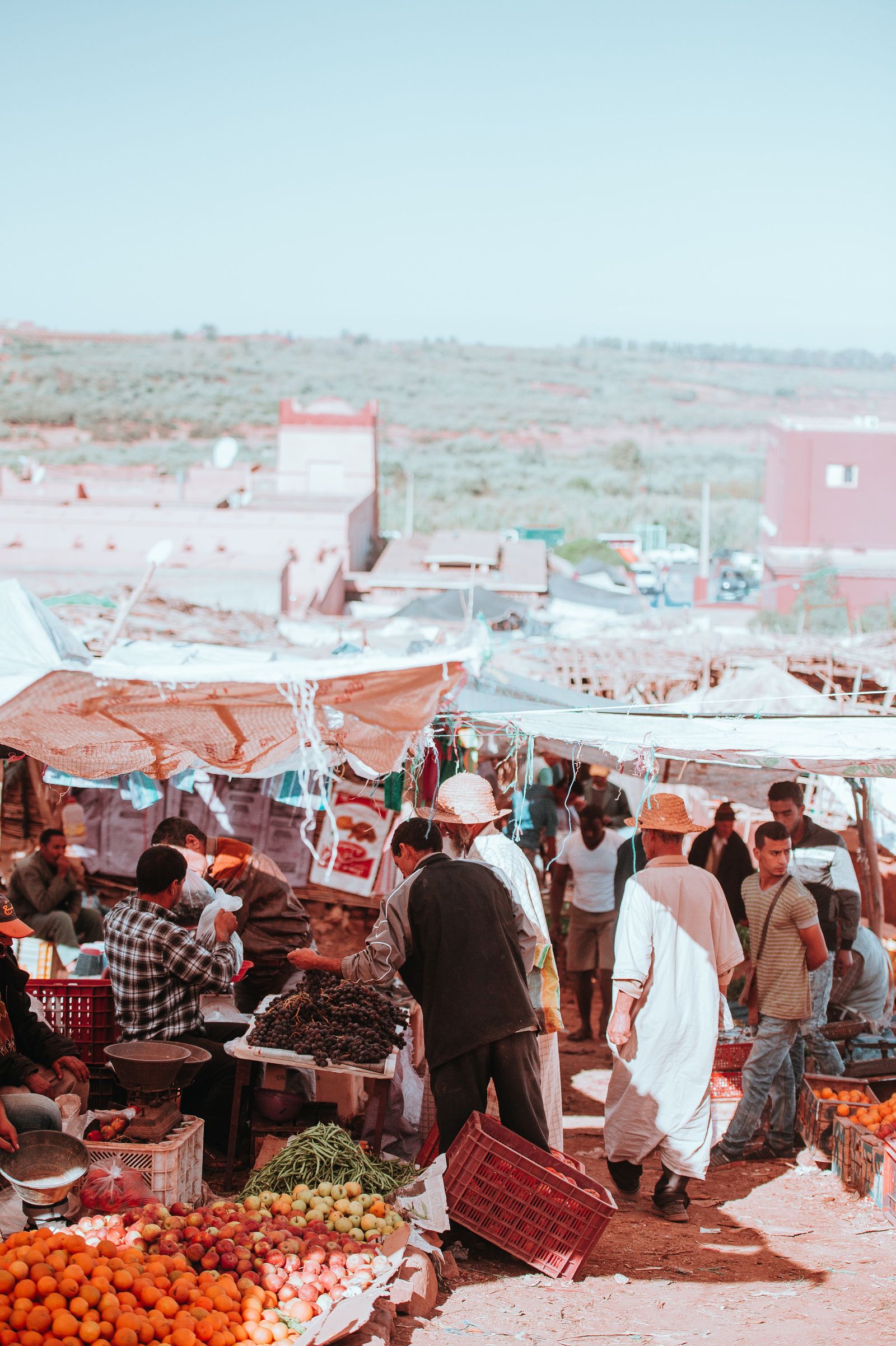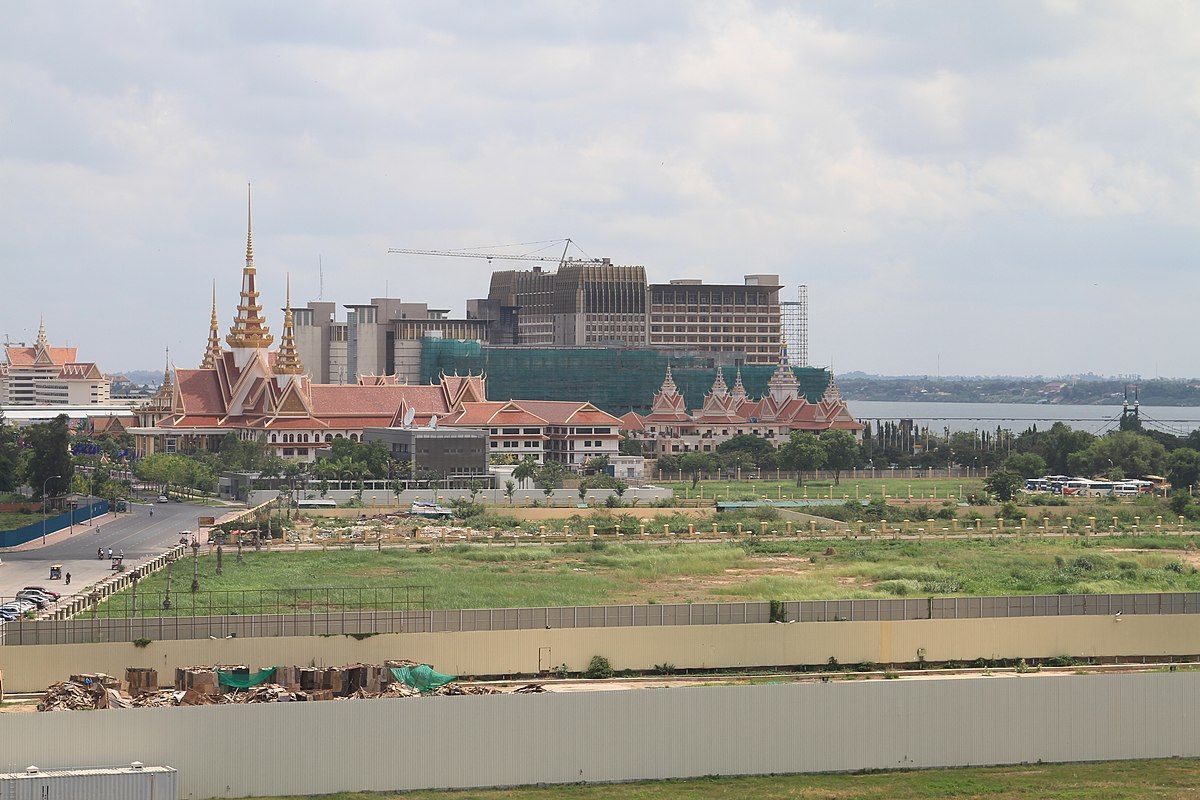With over 200,000 deaths from COVID-19, the United States was supposed to be among the places best prepared to handle a health crisis. It has since instead proven, at least among comparable countries, that it is one of the worst.
Looking past the developed world yields an even more sobering picture. Even countries without solid testing infrastructure—India, Brazil, Argentina—have seen their case counts explode. Many of these nations lack more than healthcare: India’s lockdown trapped millions of migrant workers thousands of miles away from home, and food prices in Yemen have spiked after lockdowns.
One thing those who suffered most from the pandemic have in common is clear: they all have substantial informal economies, networks of businesses and laborers operating in a gray zone overlooked by government regulations and protections. Far from being a distinct challenge, heavy reliance on the informal sector has exacerbated the pandemic, hamstrung governments’ ability to effectively respond, and set up a myriad of future policy challenges. Workers left off official payrolls and statistics make it difficult to enforce public health orders or target welfare programs, and missing tax revenue from unregistered businesses strains governments’ ability to finance new stimulus. Now, more than ever, governments need to tackle the weaknesses at the heart of the informal economy as they move into a post-pandemic world.
Before the Crisis: The Welfare State in Emerging Economies
Prior to the pandemic, most informal workers were not eligible for government benefits. Many migrant laborers and gray-market factory workers are not protected by unions or entitled to unemployment insurance, nor can they report poor working conditions to local authorities for fear of being exposed for under-the-table work. Lest we think this is an exception, the UN International Labor Organization estimates that 2 billion people worldwide work informally, or more than 60 percent of the global workforce. Among these, most work in cottage industries or agriculture, sectors especially prone to underregulation. Fewer, though still many, work in export industries like textiles.
To some extent, these gaps exist by necessity. The countries with the highest share of their workers employed informally are the least able to afford an expansive welfare state. The World Bank finds that in these countries, less than three percent of the population is eligible for unemployment benefits. Despite the well-documented benefits of the welfare state in developed economies, such as higher social mobility, less extreme poverty, and, importantly in the current crisis, better population health, the simple truth is that the generous coffers and expansive borrowing capacities that allow rich countries to maintain stable safety nets is a pipe dream elsewhere. When emerging economies take on new debt, they often pay exorbitant interest rates thanks to a very real risk of default. From Argentina to Lebanon, history is littered with examples of governments that overspent and left creditors empty-handed. Compare that to the United States, where the dollar’s status as the world’s reserve currency and innovative monetary policy keep interest payments at a minimum, and debt-to-GDP ratios above 100 percent are paper inconveniences at best and future problems at worst.
Businesses that hire and fire off the record also keep their money off the books.
Unfortunately, tolerating the informal economy creates its own set of problems. Governments justifiably believe that they cannot afford to crack down on informal workers with so many jobs at risk.
But businesses that hire and fire off the record also keep their money off the books, creating a cycle of insufficient tax revenues that further constrain government spending. It is no surprise, then, that rather than shrinking as the economy grows, informal sectors sometimes expand with it. Combined with other factors like corruption, many emerging economies were left thoroughly unprepared for an economic shock like the pandemic.
The COVID-19 Pandemic and Emerging Economy Responses
The COVID-19 pandemic created a clear dilemma for governments: they could shut down their economies using stay-at-home orders and temporary shutdowns to “flatten the curve” or they could accept the public health cost of the crisis in an attempt to stave off an economic shock. Nearly all developed countries chose the former, believing that the temporary pain, eased by expansive monetary and fiscal policy, would be worth avoiding mounting death tolls and overcrowded hospitals.
Emerging economies face a different challenge. Unable to borrow as much to sustain massive fiscal responses like the United States’ CARES Act, and without the infrastructure to deliver aid, lockdowns literally risk starving the poor. While street vendors and waste pickers lose their livelihoods, formal businesses like grocery stores reopen, exacerbating inequalities. In India, migrant workers say that they are likely to die from hunger before the virus, and Pakistani Prime Minister Imran Khan asked, “If I impose a total lockdown, what will happen to our country’s poor?” As a result, even where lockdowns have been implemented, informal workers must often disregard them to survive, and governments must lift shutdowns sooner than planned. Add to that densely populated urban centers and poor sanitation and law enforcement, and most developing countries have no room to implement or enforce traditional social distancing policies.
Nevertheless, many emerging economies have done what they can to provide more fiscal ammunition. In addition to lowering interest rates, developing countries’ COVID-19 fiscal response packages average two percent of their annual GDP—not insignificant, though it pales in comparison to the 8.3 percent of GDP that the average developed economy has brought to bear. Knowing that they cannot afford a prolonged lockdown, governments have strategically allocated more of their funding to healthcare rather than broad-based social welfare, buying time and flattening the curve with shorter social distancing measures. Despite these challenges, the direct public health impact on developing countries has been lower than predicted.
Avoiding a “Lost Decade”
Even without the social distancing policies that some in the developed world blame for exacerbating the economic downturn, developing economies face many barriers to recovery.
The lacking public health response has direct effects on the economy: more people die or suffer long-lasting side effects from being infected, taking away from future productivity. More importantly, however, the pandemic is uniquely likely to cause economic “scarring,” where long-run economic growth slows even after an initial recovery. Unemployed workers and bankrupted businesses do not move on or reopen overnight, children who miss school or fall into poverty lose out on future earnings, and businesses that forgo new investments miss out on years of lost growth. For example, years after Sierra Leone’s Ebola epidemic, its growth remains below pre-epidemic levels. And after a 1995 earthquake hit Kobe, Japan, the local shoe industry collapsed, permanently damaging the region’s employment prospects. Worsened by the lack of fiscal support, the economic shock alone will take years to recover from, especially given the fact that it may take months at the very least to effectively distribute a vaccine when one becomes available. Estimates early in the pandemic warning that corporate defaults might exceed the level in 2008 seem to be coming true, and any rebound will be halting at best.
Perhaps more concerningly, the fiscal measures that governments have taken on may come back to bite them in the future. With lower tax revenue due to economic losses and investor flight away from markets more vulnerable to the pandemic, lenders have increasingly entrenched themselves in safer assets like gold and advanced economies' bonds. Defaults earlier in the pandemic have convinced many investors that emerging markets are especially susceptible to being overwhelmed by pandemic-related shocks, making it costly to borrow even as governments need more cash to sustain the economy. Although low global interest rates have pushed more money back into some emerging economies, recent default events, like Zambia missing an interest payment in late October, may continue to exacerbate stability concerns.
Worse, combined higher expenditures and lower revenues may go beyond the level of previous defaults. Defaults on debts to foreign investors are admittedly dangerous: they increase the premiums on future borrowing and force governments to adopt painful austerity measures. But a potential default on debts to domestic investors looks increasingly likely as the crisis drags on, which would erase savings and further damage an economic recovery.
Some progress has been made on this front. The G20 countries, for example, agreed to suspend bilateral debt payments from emerging economies in May and committed to additional restructuring guidelines in November. This does little to resolve debt to other creditors, especially private lenders who have often refused to renegotiate debt, hoping to freeride on relief instead provided by governments. Unfortunately, this stubbornness undermines the effectiveness of governmental responses as well: when ratings agencies downgraded the debt of participants on the G20’s restructuring scheme, some developing countries opted to pull out of the plan, afraid that future borrowing would become more expensive.
Even without default, the consequences of this game of chicken will be devastating. As history demonstrates, painful austerity measures when countries are on the brink of bankruptcy do little to encourage growth. In fact, IMF managing director Kristalina Georgieva estimates that African countries will need more than US$300 billion of additional fiscal firepower through 2023. Rather, spending cuts constrain recoveries, making countries unable to stimulate their economies and kickstart a recovery.
Any solution to the looming fiscal crisis must involve more than individual lender countries agreeing to forgo debt payments; large-scale restructuring deals must involve private sector buyin, especially as many African countries borrow less through bilateral debt agreements and more from commercial creditors. But without a clear legal mechanism to force a deal, it seems increasingly likely that private creditors will wait for other lenders to blink first, profiting off being the last ones to take a haircut on their payments. Coordinated action by lender countries, such as using courts to invalidate lending agreements, seems unlikely to occur.
Of course, international financial institutions could step in. Organizations like the IMF could theoretically buy back debt from private lenders, but any proposals have remained strictly academic. Given international financial institutions’ track record during the pandemic—the World Bank has been slower to act and disbursed fewer funds than it did in 2008—a major intervention seems unlikely.
This is not to say there are no ways forward. During the Greek sovereign debt crisis, for example, the country’s legislature unilaterally amended debt contracts, forcing investors to take losses on the order of 50 to 60 percent of their owed earnings. At the time, the concern was that such a massive restructuring would scare investors off from the Eurozone entirely and create an unsustainable moral hazard—what would stop Italy and Spain from taking the same route to end their fiscal problems? In hindsight, however, it seems as if the Greek restructuring had little effect on the markets or other European countries’ ability to borrow.
Naturally, a concerted effort by emerging economies to rehaul their debt agreements would be far more impactful than Greece’s restructuring. And there is no ignoring the collective action problem at play: countries too quick to bail themselves out of an oncoming crisis might find themselves hard pressed to borrow in the future (though it is worth noting that Argentina, with nine defaults in the last century, seems to have no trouble finding creditors). But in light of the pandemic’s unprecedented impact on the global economy, perhaps unconventional methods are necessary to prevent a stalled recovery.
The Way Forward: Reforming Informal Economies after the Pandemic
Beyond a looming fiscal crisis, emerging economies face a greater problem. Unlike the last recession, which many developing countries weathered relatively unscathed, the pandemic has demonstrated that a system built on informal work is deeply vulnerable to outside shocks. Governments are less able to effectively target economic stabilizers, and many workers inevitably fall through the cracks. While another pandemic on the scale of this one is unlikely—though climate change and environmental destruction admittedly increase the risk—recovery from future crises will hinge in large part on governments’ ability to act decisively.
Most of the reasons why the informal economy exists are structural. Opaque regulations and corruption make it easier and more attractive to dodge government oversight. Many established firms ignore poorer, marginalized consumers who turn to informal businesses. Poor or arbitrary law enforcement can make the benefits of legal protection less obvious for employers and employees alike. Progress on issues like more transparent governance is always gradual, but it exists: the IMF estimates that the informal economy’s share of GDP has steadily fallen over the past decade.
A common adage in politics is to “never waste a crisis.” The unprecedented levels of government intervention during the pandemic, from lockdown orders to business bailouts, have set the stage for a sea change in the way developing countries regulate the economy. In light of the clear shortcomings exposed in the past year, papering over the cracks in informal work is no longer enough.





